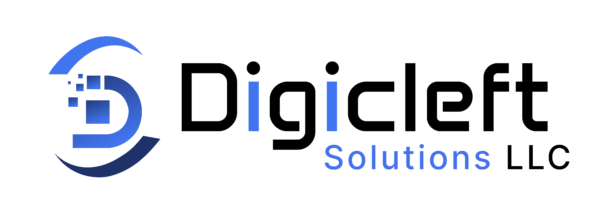
Introduction: Designing Smarter, Not Harder
Let’s be honest—UI/UX design isn’t what it used to be. Gone are the days of manually tweaking every pixel or spending weeks prototyping basic flows. Today, with AI entering the design game, the process is faster, more efficient, and a whole lot smarter.
If you’re a designer (or aspiring to be one), you’ve probably wondered:
“How can I keep up with tight deadlines and still deliver amazing user experiences?”
Well, 2025 has an answer for that—and it’s spelled A-I.
In this blog, we’ll explore the top AI-powered tools revolutionizing UI/UX design this year. Whether you’re sketching wireframes, building high-fidelity prototypes, or optimizing user flows, these tools can help you move quicker, without sacrificing quality.
Why AI in UI/UX Design Matters Now More Than Ever
AI isn’t just a trendy buzzword in design anymore. It’s solving real problems:
- Repetitive tasks? Automated.
- User testing? Simulated with real data.
- Color schemes, typography, layouts? Suggested intelligently.
- Accessibility? Enhanced effortlessly.
In short, AI is like having a smart co-designer who doesn’t sleep and never runs out of ideas.
Top AI Tools Transforming UI/UX Design in 2025
Let’s dive into the real MVPs of AI-powered UI/UX design this year.
1. Uizard — Design Prototypes with a Prompt
Ever had a client scribble an app layout on paper and expect magic?
Uizard turns those sketches—or even plain text descriptions—into working prototypes. In 2025, it’s become even smarter, generating responsive layouts, color palettes, and basic interactivity in seconds.
🧠 AI Feature: Converts hand-drawn wireframes or text input into full-fledged designs
🎯 Best For: Non-designers, quick MVPs, internal app mockups
2. Galileo AI — Design from Just a Prompt
This one feels like magic. Galileo AI creates beautiful UI designs directly from your text prompts. For example, you could type:
“Design a dashboard for a crypto trading app with dark mode and charts.”
And boom—your design appears.
⚡️ AI Feature: Trained on thousands of top UI designs, it mimics best practices instantly
🎨 Best For: Early-stage concepts, landing pages, dashboard UIs
3. Figma AI (Built-in Features + Plugins)
Yes, Figma has always been a crowd favorite. But with AI integrations like FigGPT and native Figma AI Assist, it’s gone to a whole new level in 2025.
You can now:
- Autocomplete design elements
- Generate copy for CTAs
- Translate designs into responsive code
- Get layout suggestions based on data
🔧 AI Feature: Smart automation inside your everyday Figma workflow
🛠️ Best For: Teams, agencies, designers collaborating remotely
4. Relume Library + AI Site Builder
Relume originally gained traction for its massive UI component library, but now their AI site builder is a hit. It generates entire website structures and design layouts using a simple questionnaire or prompt.
🧩 AI Feature: Creates sitemap, wireframe, and layout—fully editable in Figma
🌐 Best For: Web design agencies, freelancers, startups needing fast launches

5. Attention Insight — Predict User Attention
Want to know where users will look before launching your site or app?
Attention Insight uses AI heatmaps based on predictive models to simulate human eye-tracking.
🔍 AI Feature: Predictive UX testing using AI-powered heatmaps
📈 Best For: Conversion optimization, A/B testing, UX reviews
6. Fronty — AI to HTML/CSS in Seconds
Designing is only half the battle. What about translating it into clean code?
Fronty lets you upload a design or image and get a fully responsive HTML/CSS version instantly.
🧑💻 AI Feature: Converts static visuals into ready-to-use code
🚀 Best For: Developers, hybrid designer-devs, rapid prototyping
7. Visily — Collaborative AI Wireframing
Visily combines collaboration and AI to help team’s wireframe together—even if not everyone’s a designer. With drag-and-drop simplicity and AI-enhanced suggestions, it’s great for brainstorming sessions.
🤝 AI Feature: Autocompletes elements and layouts based on context
👥 Best For: Product managers, remote teams, MVP creators
Honorable Mentions
Some tools didn’t make the full list but deserve a shoutout:
- Magician (Figma Plugin): Adds AI-generated icons, images, and copy
- Jasper Art for UI Mockups: Create quick visuals or placeholders
- Durable: AI website builder for freelancers and local businesses
- Adobe Firefly (Design Assistant): Still evolving, but promising for creatives
How to Choose the Right Tool
Let’s keep it real—you don’t need every tool on this list. Pick based on your workflow:
| 🧠 Task | 🚀 Recommended Tool |
| Fast Wireframes | Visily, Uizard |
| Full Website Layouts | Relume, Durable |
| Design from Prompt | Galileo AI |
| Design to Code | Fronty |
| Figma Enhancements | Figma AI, Magician |
| UX Testing | Attention Insight |
Final Thoughts: Embrace the AI Design Revolution
We’re not replacing designers with AI—we’re upgrading them. These tools aren’t about cutting corners. They’re about cutting time, boosting creativity, and bringing ideas to life faster than ever before.
So, whether you’re a solo creator, an agency owner, or a UX strategist, 2025 is the year to go from overwhelmed to AI-empowered.
💡 Pro Tip: Try combining tools (like Galileo AI + Figma + Fronty) to build an entire product experience in hours, not weeks.
Try out one of these tools this week and see the difference AI can make. If you need help picking the right one or want a walkthrough, feel free to contact us.
Design smarter. Design faster. Design with AI.
Frequently Asked Questions (FAQs)
1. What are AI-powered UI/UX design tools?
AI-powered UI/UX design tools use artificial intelligence to automate or assist with design tasks like wireframing, prototyping, content generation, and user testing. They help designers work faster and more efficiently while maintaining high-quality results.
2. Can AI completely replace UI/UX designers?
No, AI is not a replacement for designers. Instead, it’s a collaborative assistant that handles repetitive tasks and enhances creativity. Human judgment, empathy, and design thinking are still essential in crafting great user experiences.
3. What is the best AI tool for beginners in UI/UX design?
Tools like Uizard, Visily, and Galileo AI are perfect for beginners. They offer user-friendly interfaces and allow you to create layouts or designs from simple inputs like text or sketches—no advanced design knowledge needed.
4. Are AI design tools free to use?
Many tools offer free tiers or trials with limited features. However, for access to advanced functionalities (like export options, team collaboration, or unlimited designs), you may need to subscribe to a paid plan. Always check the pricing page for the latest details.
5. How can AI improve the UX design process?
AI can:
- Predict user behavior using heatmaps and analytics
- Suggest layout improvements based on usability patterns
- Test accessibility and responsiveness instantly
- Generate content, icons, and visuals on the fly
This speeds up testing and iteration significantly.
6. Which AI tool is best for converting designs into code?
Fronty and Uizard are both excellent for turning design mockups into HTML/CSS code. They’re especially useful for developers who want to bridge the gap between design and deployment.
7. Is it safe to use AI-generated designs for commercial projects?
Yes, but always double-check the licensing terms of the tool you’re using. Some AI-generated assets may have usage restrictions, especially for icons, images, or text generated through third-party APIs.
8. Can AI help with mobile app UI/UX design too?
Absolutely. Tools like Uizard, Galileo AI, and Figma AI are mobile-friendly and can help design responsive interfaces that adapt to multiple screen sizes, including mobile apps.

